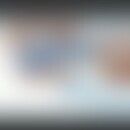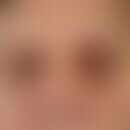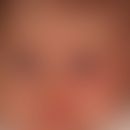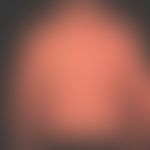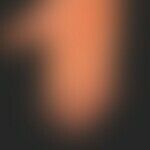Synonym(s)
HistoryThis section has been translated automatically.
DefinitionThis section has been translated automatically.
Rare, predominantly acquired, chronic inflammatory keratinization disorder with, seasonally variable (often improved in winter), extensive keratotic red-brown plaques, follicular hyperkeratoses and extensive palmo-plantar hyperkeratoses (often combined with onychodystrophy), associated skin disease of unexplained etiology. Although the skin lesions phenotypically show a psoriasiform pattern, there is no relationship.
You might also be interested in
ClassificationThis section has been translated automatically.
According to Griffith, there are 5 types to which an HIV-associated form is added:
- Classic adult type (approx. 50%): 80% healing after 3 years.
- Atypical adult type (approx. 5%): Eminently chronic course.
- Classic juvenile type (approx. 10%): Healing mostly after 1 year.
- Circumscribed juvenile type (approx. 25%): Different healing rates (1/3 in 3 years).
- Atypical juvenile type (about 5%): Chronic course.
- HIV-associated form (< 5%).
Occurrence/EpidemiologyThis section has been translated automatically.
Incidence: 0.2/100,000 inhabitants.
EtiopathogenesisThis section has been translated automatically.
Unknown. It is a hyperproliferative keratinization disorder with increased turnover rates. Mostly sporadic in occurrence. Type 5 (hereditary atypical juvenile form) is inherited in an autosomal dominant manner. This form is associated with a gain-of-function mutation in the CARD14 gene(Lewin et al 2018).
Furthermore, a deficiency of retinol-binding protein and disturbances in vitamin A metabolism have been described.
ManifestationThis section has been translated automatically.
Initial manifestation is possible at any age. Disease peaks are in children in the 1st decade of life and in adults in the 5th decade of life. More frequent after serious illness or accidents and in patients with HIV infection. S.u. Immune reconstruction syndrome.
LocalizationThis section has been translated automatically.
Type 1-3: Mainly localized on fingers and backs of hands as well as on the extensor sides of extremities (e.g. backs of upper arms, extensor sides of fingers), on the capillitium, on the face (especially eyebrows, nasolabial folds), more rarely also on the trunk. Localization on the flexor (axillary) side is also detectable.
Type 4: V.a. localized on knees and elbows.
Type 5: Localized mainly on the hands and feet.
ClinicThis section has been translated automatically.
Initial symptoms: Dense, follicular, keratotic, red to red-brownish (orange-red), pinhead-sized, pointed papules with central, conical or cratered keratosis.
Pityriasis rubra pilaris type 1 (classic form): Extensive pityriasiform reedy, often marginal, sharply demarcated, follicular ("nutmeg grater"), lichenified erythema or plaques on the capillitium, face (especially eyebrows, nasolabial folds), also on the trunk. Confluence leads to the formation of large, reddish-brown, velvety erythema and plaques over entire areas of the body, in which the initial follicular character is lost. Enclosed islands of normal skin ( nappes claires) are typical. Red, diffuse hyperkeratosis on palmae and plantae as well as on the backs of the hands and extensor sides of the fingers. Formation of painful rhagades. The nails may be longitudinally furrowed and also thickened(onychogrypose).
Hair loss in the later stages and usually very severe, plaster-like scaling of the head. Ectropion. The classic forms not infrequently progress to erythroderma. Frequent deterioration in summer (important DD to psoriasis vulgaris) and marked improvement (until healing) in the cold seasons.
Pityriasis rubra pilaris types 2 and 3: Types 2 and 3 are not morphologically different from the classic adult type.
HistologyThis section has been translated automatically.
Irregular acanthosis without thinning of the epidermis over the papillae. Severe hyperkeratosis with alternating islands of parakeratosis(checkerboard pattern). The follicles are often dilated like ampullae and filled with horny masses. There is a light to moderately dense lymphohistiocytic infiltrate in the dermis. Focal exocytosis with spongiosis is possible. Acantholytic aspects are also present, resulting in the unusual picture of acatnolytic dyskeratosis similar to Grover's disease or Darier's disease (Hoffmann J et al. 2025).
Differential diagnosisThis section has been translated automatically.
Psoriasis vulgaris: Important differential diagnosis. Follicular hyperkeratoses ("rubbing iron skin") as well as nappes claires are unusual for psoriasis. The uniform palmo-plantar hyperkeratoses are not so encountered in psoriasis.
Seborrheic eczema: Identical statement as in psoriasis vulgaris.
Erythrokeratodermia figurata variabilis: Migratory (variable), bizarrely configured, anular or polycyclic, scaly papules and plaques with variable clinical expressivity and acuity (PRP relatively constant in location). Follicular hyperkeratoses are absent. Utericarial skin lesions are also possible (always absent in pityriasis rubra pilaris). Older foci present as large, red or red-brown, usually marginal plaques.
Lichen planus follicularis: Histology and possibly immunohistology are conclusive.
General therapyThis section has been translated automatically.
External therapyThis section has been translated automatically.
Caring ointment therapy: In eczematized or irritated skin, mild glucocorticoids such as 0.5-1.0% hydrocortisone cream or lotion (e.g. Hydrogalen, R123 ) bring good short-term results. Otherwise, nourishing, keratolytic or anti-inflammatory ointments should be applied to the still moist skin immediately after bathing therapy and other washing procedures according to the clinical picture. This allows for a lasting retention of the moisture. Good effects are obtained with saline-containing or propylene glycol-containing ointments R105. The correct treatment must be tested on a case-by-case basis.
Skin care and cleansing: Basic principle: As little degreasing of the skin as possible! As few irritating cleansing substances as possible, i.e. sparing use of soaps or syndets. No use of liquid soaps. Mild cleansing of the body skin with hydrophilic (water-miscible) body oils. This achieves a sufficient cleansing effect and at the same time a moisturizing care. Instead of hydrophilic oils also O/W emulsions can be used (e.g. Abitima Lotion, Excipial U Hydrolotio, Sebamed Lotion). Briefly shower off the skin, apply and spread the emulsion on the moist skin, briefly shower off again. The remaining emulsion film is not perceived as unpleasant.
Baths: are important and recommended for skin care. Different bath additives according to skin condition (see Table 1). The patient should be familiarized with the therapeutic modalities and be able to prepare the baths himself, e.g. oil baths as"Cleopatra bath" or clover baths.
In phases of clinical improvement, only caring external measures are necessary, e.g. Ungt. emulsif. aq., Linola milk, ash base cream.
Clothing: Wear non-irritating body wash. Smoothly woven fabrics of cotton or linen are best. Unsuitable are fabrics made of animal wool. Synthetic fabrics are also unsuitable, but materials made of viscose are generally tolerated.
Radiation therapyThis section has been translated automatically.
Internal therapyThis section has been translated automatically.
Retinoids (first-line therapy): Isotretinoin (e.g. Isotretinoin-ratiopharm; Acnenormin) 0.5-1.0 mg/kg bw p.o.
- Alternatively: Acitretin (Neotigason), initially 0.5-0.7 mg/kg bw/day; aim for a maintenance dose of 10 mg/day.
- Alternative in cases of resistance to therapy and severe forms of the disease: success has been described with methotrexate 5-25 mg/week p.o. Effects can be expected after 4-6 months. Maintenance therapy: 2.5-5.0 mg/week p.o. In very severe cases, a combination of acitretin 0.5-0.7 mg/kg bw/day p.o. with methotrexate 15.0-30.0 mg/week p.o. can be tried.
- Alternatively, ciclosporin was used in adults and children (3.0 mg/kg bw/day). The results are controversial. Other immunosuppressants such as azathioprine (e.g. Imurek) were not very successful.
- Alternative: Positive experience with fumarates ( off-label use) has been confirmed by other working groups.
- Alternative: Sporadic successes have been described with extracorporeal photopheresis.
- Alternative: In individual cases, therapeutic successes have been achieved with infliximab (5 mg/kg bw i.v.), adalimumab (most commonly used), etanercept, ustekinumab, guselkumab and secukinumab (at usual doses) ( off-label use). A combination with low-dose MTX is possible in severe cases (see Kahlert K et al. 2019).
Progression/forecastThis section has been translated automatically.
TablesThis section has been translated automatically.
Balneotherapy for pityriasis rubra pilaris
Skin condition |
Bath |
Example preparations |
Frequency |
Dry bath |
3% Salt bath |
300 mg??? Table salt for 1 full bath |
2-4 times a week 10-20 min. |
Oil baths |
Balneum Hermal F, Cordes oil bath, Linola Fett N oil bath |
||
Cleopatra bath |
1(-2) cups of milk + 1(-2) tablespoon of olive oil for 1 full bath |
||
Eczematous, inflammatory |
Bran bath |
Potter's bran bath |
|
Valerian bath |
Silvapin valerian oil bath |
||
Polidocanol oil baths |
Balneum Hermal plus |
||
Lemon balm bath |
Kneipp Good Night Bath |
Note(s)This section has been translated automatically.
LiteratureThis section has been translated automatically.
- Albert MR (1999) Pityriasis rubra pilaris. Int J Dermatol 38: 1-11
- Auffret N et al (1992) Pityriasis rubra pilaris in a patient with human immunodeficiency virus infection. J Am Acad Dermatol 27: 260-261
- Behr FD et al. (2002) Atypical pityriasis rubra pilaris associated with arthropathy and osteoporosis: a case report with 15-year follow-up. Pediatr Dermatol 19: 46-51
- Besnier E (1889) Observations pour servis a l'histoire clinique de pityriasis rubra pilaris. Annales de Dermatologie et de Syphilographie (Paris) 11: 253-287, 398-427, 485-544
- Coras B et al. (2005) Fumaric acid esters therapy: a new reatment modality in pityriasis rubra pilaris? Br J Dermatol 152: 386-403
- Devergie MGA (1856) Pityriasis pilaris, maladie de la peau non décrite par les dermatologistes. Gazette hebdomadaire de médecine et de chirurgie (Paris) 3: 197-201
- Gemmeke A et al. (2010) Pityriasis rubra pilaris - a retrospective monocentric analysis over 8 years. JDDG 8: 439-445
- Haenssle H et al. (2004) Extracorporal photochemotherapy for the treatment of exanthematic pityriasis rubra pilaris. Clin Exper Dermatol 29: 244-246
- Hashimoto K et al. (1999) Pityriasis rubra pilaris with acantholysis and lichenoid histology. Am J Dermatopathol 21: 491-493
- Hoffmann J et al. (2025) Grover's disease-like patterns in early pityriasis rubra pilaris. J Dtsch Dermatol Ges. 23:231-233.
- Kaskel P et al. (2001) Phototesting and phototherapy in pityriasis rubra pilaris. Br J Dermatol 144: 430
- Kaposi M (1895) Lichen ruber acuminatus and lichen ruber planus. Archives of Dermatology and Syphilis (Prague) 31: 1-32
- Lwin SM et al2018) Benefi. (cial effect of ustekinumab in familial pityriasis rubra pilaris with a new
- missense mutation in CARD14. Br J Dermatol 178:969-972.
- Mohrenschlager M et al. (2002) Further clinical evidence for involvement of bacterial superantigens in juvenile pityriasis rubra pilaris (PRP): report of two new cases. Pediatr Dermatol 19: 569
- Nakafusa J et al. (2002) Pityriasis rubra pilaris in association with polyarthritis. Dermatology 205: 298-300
- Tarral C (1835) General Psoriasis. Desquamation from the part covered with hair. In: Rayer P (editor) A theoretical and practical treatise on the diseases of the skin. Bailliere (London): 648-649
- Terheyden P et al. (2001) Erythroderma after corticosteroid withdrawal in papulosquamous dermatosis in children. Diagnosis: pityriasis rubra pilaris, classic juvenile type. Dermatology 52: 1058-1061
- Wetzig T et al. (2003) Juvenile pityriasis rubra pilaris: successfull treatment with cyclosporine. Br J Dermatol 149: 202-203
Incoming links (29)
Acanthosis; Acitretin; Acrokeratosis paraneoplastic; Barbed lichen; Besnier braid; Cleopatra bath; Devergie's disease; Eczema herpeticum; Erythema; Erythema gyratum repens; ... Show allOutgoing links (38)
Acanthosis; Acitretin; Adalimumab; Azathioprine; CARD14 Gene; Ciclosporin a; Cleopatra bath; Ectropium; Erythrodermia; Erythrokeratodermia figurata variabilis; ... Show allDisclaimer
Please ask your physician for a reliable diagnosis. This website is only meant as a reference.

